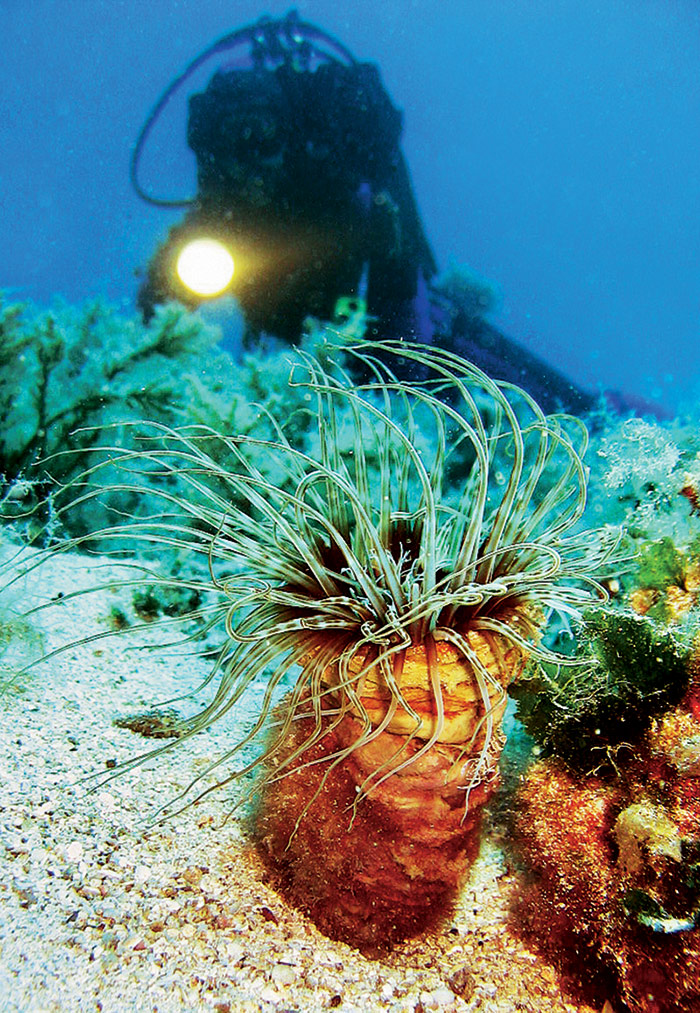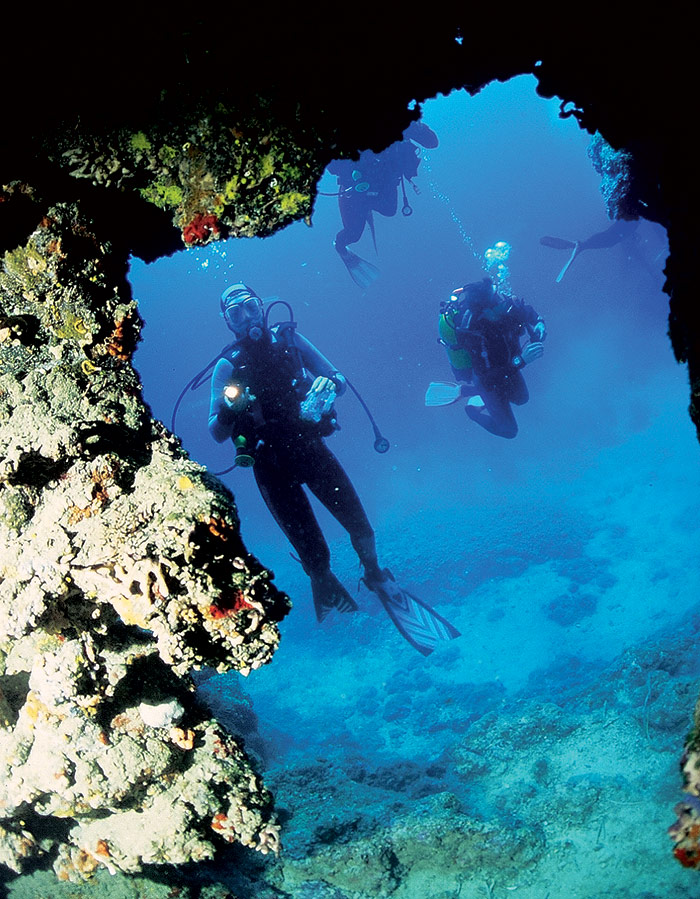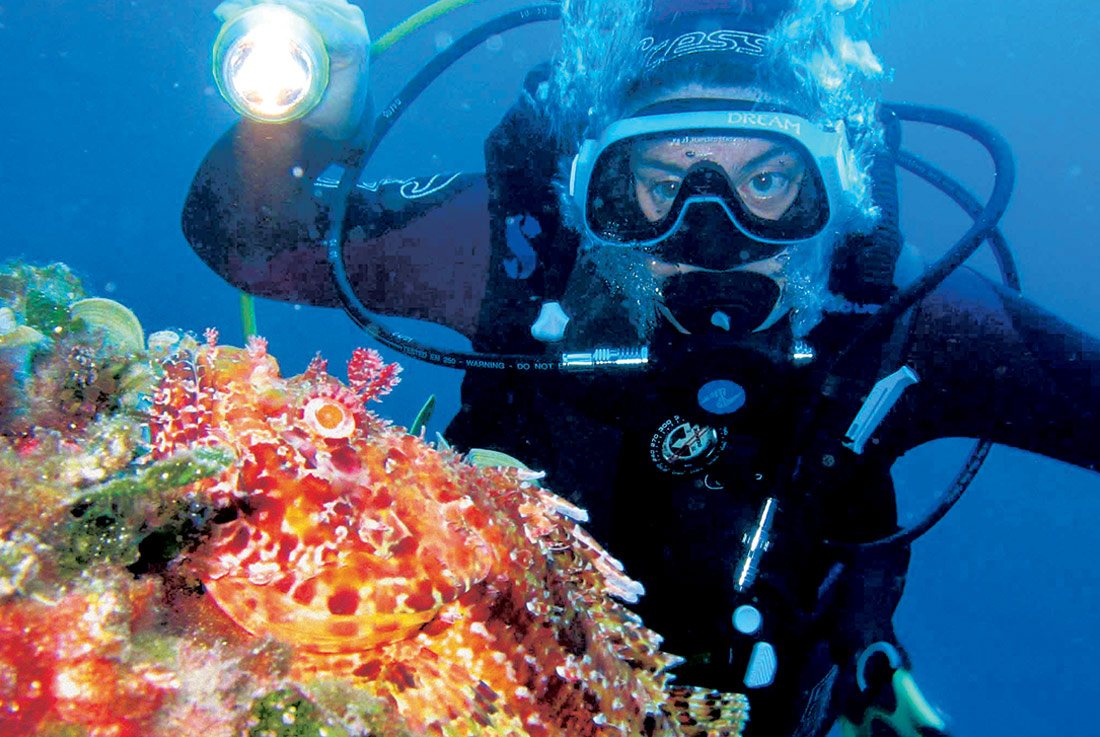Exploring the mysterious beauty of underwater plateaus in Bol, on the island of Brač, Croatia.
I am sinking slowly … and immediately I feel … peace. The immensity and silence of the deep blue. My extreme tininess in the universe of the sea. My fragility and dependence on the plastic umbilical cord, the life line between my mouth and my oxygen tank. Apart from the sound of the bubbles from my breathing, rising towards the surface double time, I hear nothing.
My view through the mask is restricted to a narrow frame; and I keep sinking, slowly. I’m entering a world of silence, a world no longer mine, in which I am no longer a predator but closer to infirm. A world, where all the beings that inhabit it are dominant – far above me on the evolutionary scale. I calm my excited heartbeat and slow my breathing. I raise my eyes to check if my brother – my diving buddy – and I are still in contact. We nod to each other. Above us is a huge mass of seawater; only by the sunlight and the direction of our bubbles can I tell which way is up.
After a few moments, in the middle of the immense blue below, I notice an orange patch towards which we are falling. We have dived deep enough to see a plateau, growing from the bottom of the sea. This is Smočiguzica, one of the most compelling undersea plateaus off the northern part of the island of Hvar. Its shape resembles a mushroom with a cap at 35 metres and the stem rooted at a depth of 70 metres. I don’t dare dive down into that darkness even though I see other neoprene shadows falling deeper, facing new challenges. Most of them are brave, experienced divers; some, however, only casual yet daring guys from the same boat that brought us here.

This morning the sea had only a mild chop, yet crossing the Hvar Channel wasn’t terribly pleasant. Just thinking of the fact that in a rocking boat I’d have to prepare the equipment and get myself into the tight neoprene suit, put on the buoyancy compensator and a 15 litre tank filled to 200bar, 9 kilos of weights and the fins made me feel sick. But once I’m in the water I feel light and agile again, and I’m ready for new adventures.
When we “land” on the Smočiguzica plateau, Matej, a far more experienced diver, wants to check my psychological stability and expertise before we go deeper. Of course, we communicate only by hand signals and head signs. He signals me to take off my mask and then put it on again. Manoeuvres which on land are simple become extremely complicated under water due to one’s sluggishness, difficulty of movement and a narrow field of vision. The procedure with the mask is unpleasant. Not only because of the salt water in my eyes, blurring the vision, but because the water has to be blown out of the mask. In the meantime, Matej secretly shuts off the valve on my tank and observes my reaction. Luckily, I’m not the panicky type. I signal that I was without air – and show him I’ve had enough of him.

We go on. On the top of the plateau we observe black-and-white dotted sea slugs (peltodoris atromaculata) and purple sea slugs (flabellina affinis). Then we descend down the “stem”, to 42 metres from where we start our slow ascent, exploring a whole new world. Sea life along the cliff is captivating and extraordinarily vivid. Spiny lobsters (palinurus vulgaris) peer out of their holes. I’ve never seen so many lobsters in one place. There are plenty of rather intrepid fish swimming past us. Tubeworms (spirographis spallanzani and protula tubularia) close their “flowers” as soon as we approach them. Matej signals to come closer – he’s found something, a big fish hiding in a crevice, which looks like a shark. Back on the boat, the guys tell us it must have been a mother conger eel (onos mediterraneus). It floats motionless in its home and watches us while we watch it. But I’m not afraid, even if it is a shark – the view through the mask makes me feel as if I’m watching this undersea world on a TV screen.
I check the pressure of the air on the manometer. There’s a little more than a quarter left. We’re back at the top of the plateau. There’s still 35 metres of sea above us. I shiver with cold. I can hardly squeeze the regulator with my teeth so that it doesn’t slip out of my mouth. In early May, at such a depth the water temperature is a mere 12 degrees. After 40 minutes I can no longer warm up, but the dive is coming to an end. During the ascent, I observe how the flora, fauna and the colour of the light change with the depth.

At a depth of 3 metres we make a 3-minute safety stop. An octopus (octopus vulgaris) swims past, elegant and carefree. When I stretch out my hand it directs itself towards Matej then towards me again. Would it like to play? No, it swims away, into the infinite blue.
When I reach the boat I’m so cold I can hardly grab the ladder. Igor, the diving instructor, rescue diver and owner of the diving centre Big Blue, helps me to lift up the equipment. The owner of the boat, an older grey-haired man from Bol, offers us some homemade brandy – that always warms the blood. Having only just climbed out of the water, I’m already thinking of the diving adventures in the coming days. They say diving in Kabal and Lučice is even more beautiful.
Text: Maja Ivanič
Photos: Jani Anžoh, Igor Glavičič



